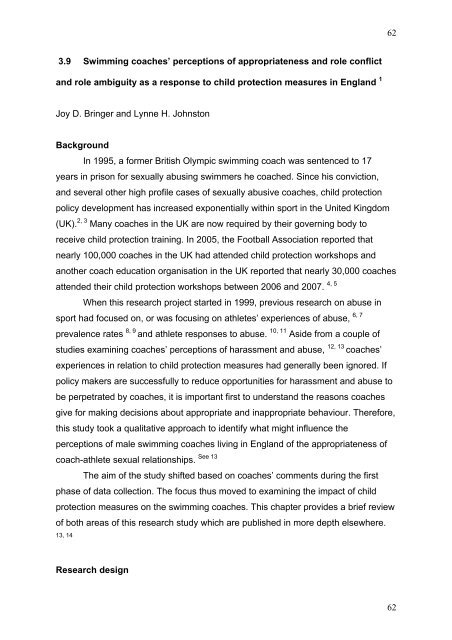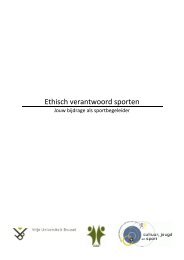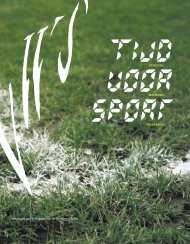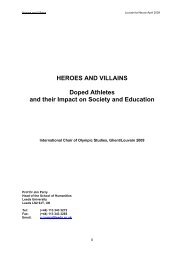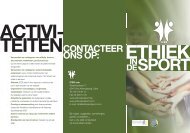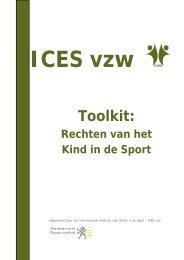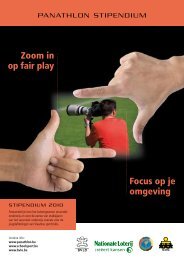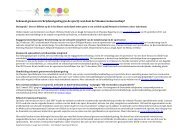Part 3 GLOBAL ISSUES: HARASSMENT AND ABUSE RESEARCH
Part 3 GLOBAL ISSUES: HARASSMENT AND ABUSE RESEARCH
Part 3 GLOBAL ISSUES: HARASSMENT AND ABUSE RESEARCH
You also want an ePaper? Increase the reach of your titles
YUMPU automatically turns print PDFs into web optimized ePapers that Google loves.
3.9 Swimming coaches’ perceptions of appropriateness and role conflict<br />
and role ambiguity as a response to child protection measures in England 1<br />
Joy D. Bringer and Lynne H. Johnston<br />
Background<br />
In 1995, a former British Olympic swimming coach was sentenced to 17<br />
years in prison for sexually abusing swimmers he coached. Since his conviction,<br />
and several other high profile cases of sexually abusive coaches, child protection<br />
policy development has increased exponentially within sport in the United Kingdom<br />
(UK). 2, 3 Many coaches in the UK are now required by their governing body to<br />
receive child protection training. In 2005, the Football Association reported that<br />
nearly 100,000 coaches in the UK had attended child protection workshops and<br />
another coach education organisation in the UK reported that nearly 30,000 coaches<br />
4, 5<br />
attended their child protection workshops between 2006 and 2007.<br />
When this research project started in 1999, previous research on abuse in<br />
6, 7<br />
sport had focused on, or was focusing on athletes’ experiences of abuse,<br />
prevalence rates 8, 9 and athlete responses to abuse. 10, 11 Aside from a couple of<br />
studies examining coaches’ perceptions of harassment and abuse, 12, 13 coaches’<br />
experiences in relation to child protection measures had generally been ignored. If<br />
policy makers are successfully to reduce opportunities for harassment and abuse to<br />
be perpetrated by coaches, it is important first to understand the reasons coaches<br />
give for making decisions about appropriate and inappropriate behaviour. Therefore,<br />
this study took a qualitative approach to identify what might influence the<br />
perceptions of male swimming coaches living in England of the appropriateness of<br />
See 13<br />
coach-athlete sexual relationships.<br />
The aim of the study shifted based on coaches’ comments during the first<br />
phase of data collection. The focus thus moved to examining the impact of child<br />
protection measures on the swimming coaches. This chapter provides a brief review<br />
of both areas of this research study which are published in more depth elsewhere.<br />
13, 14<br />
Research design<br />
62<br />
62


